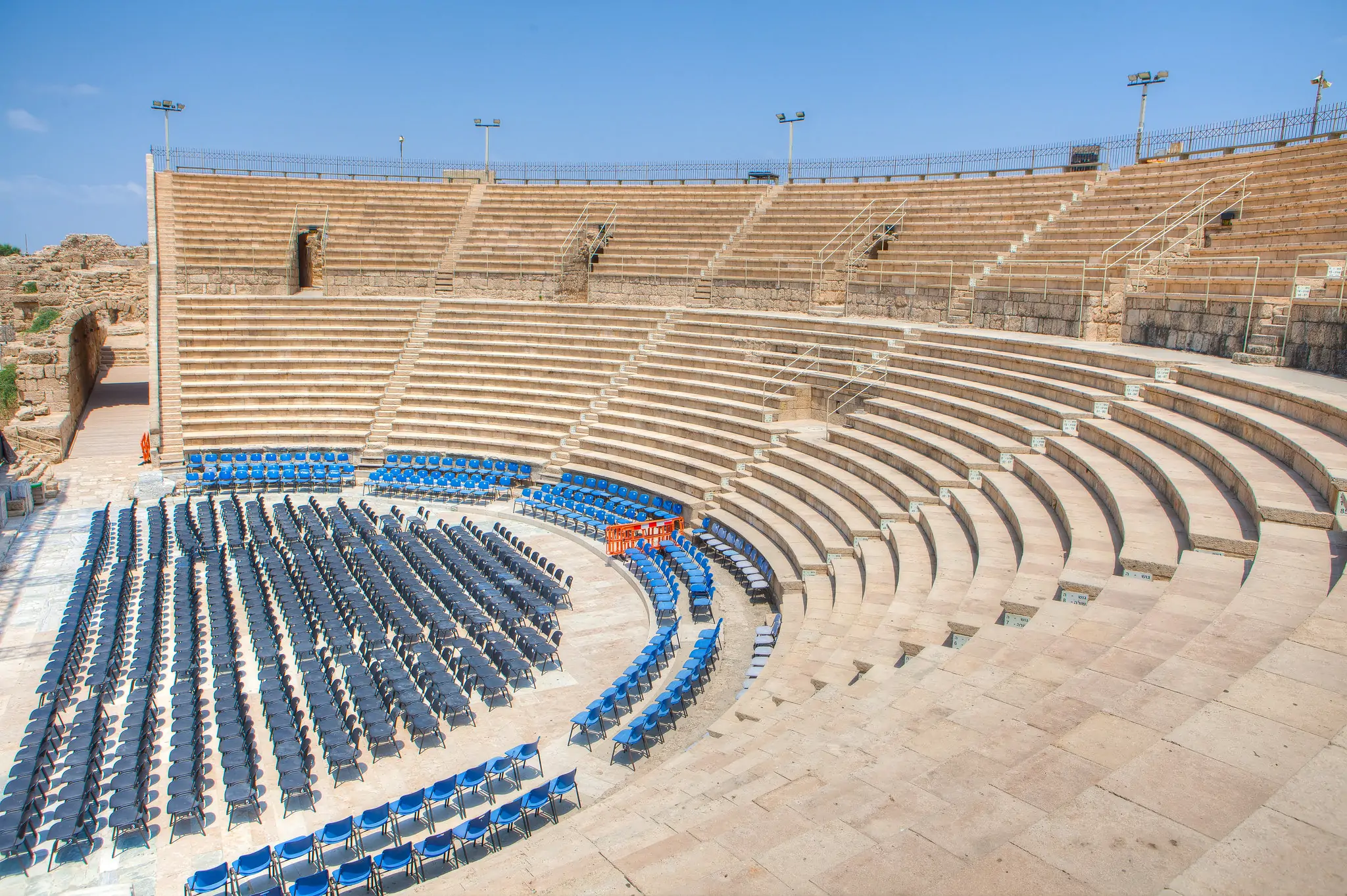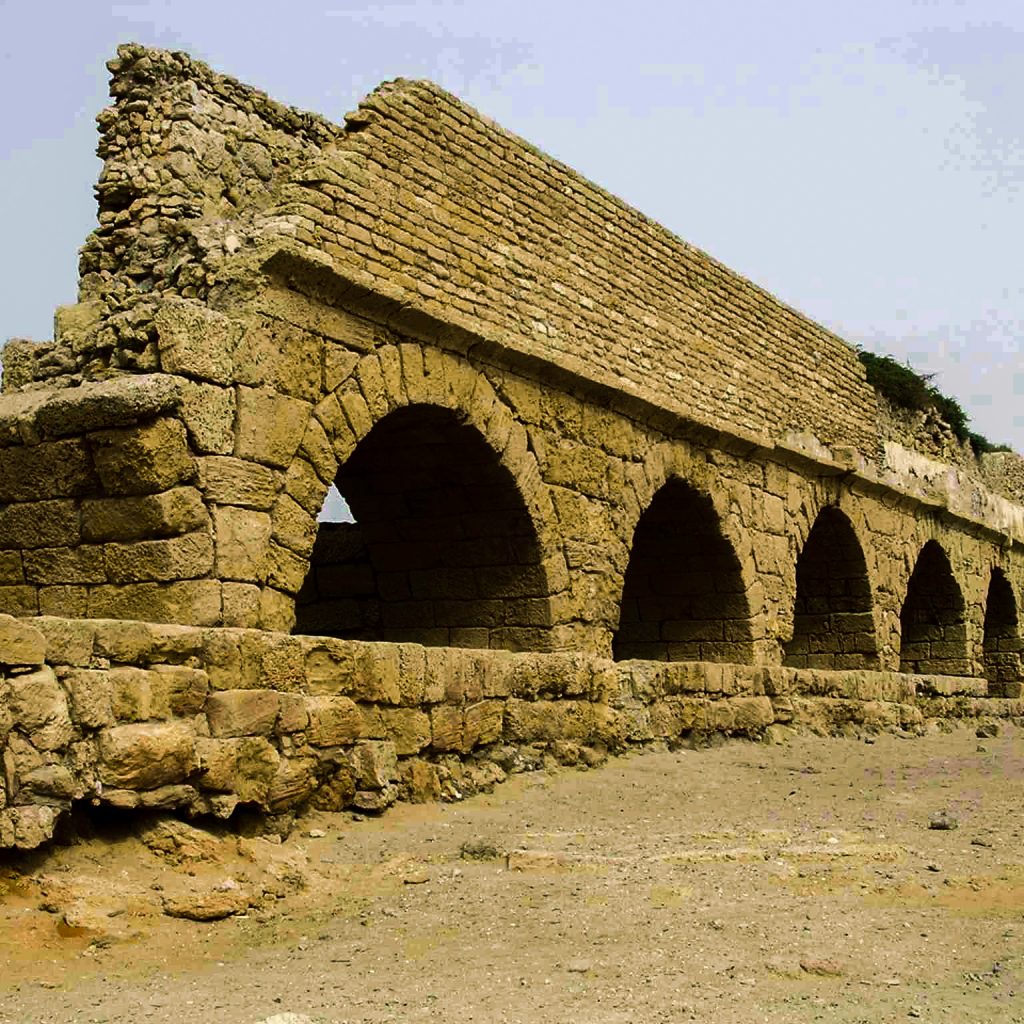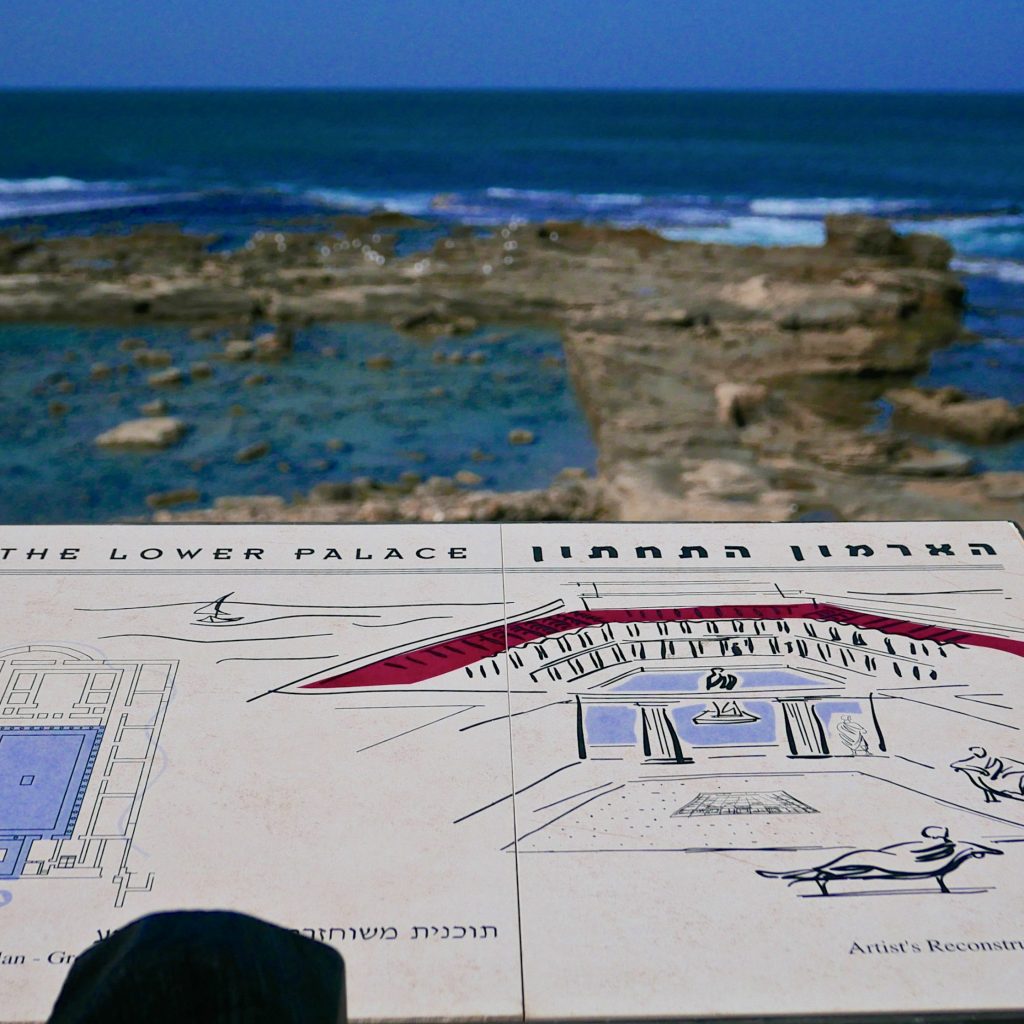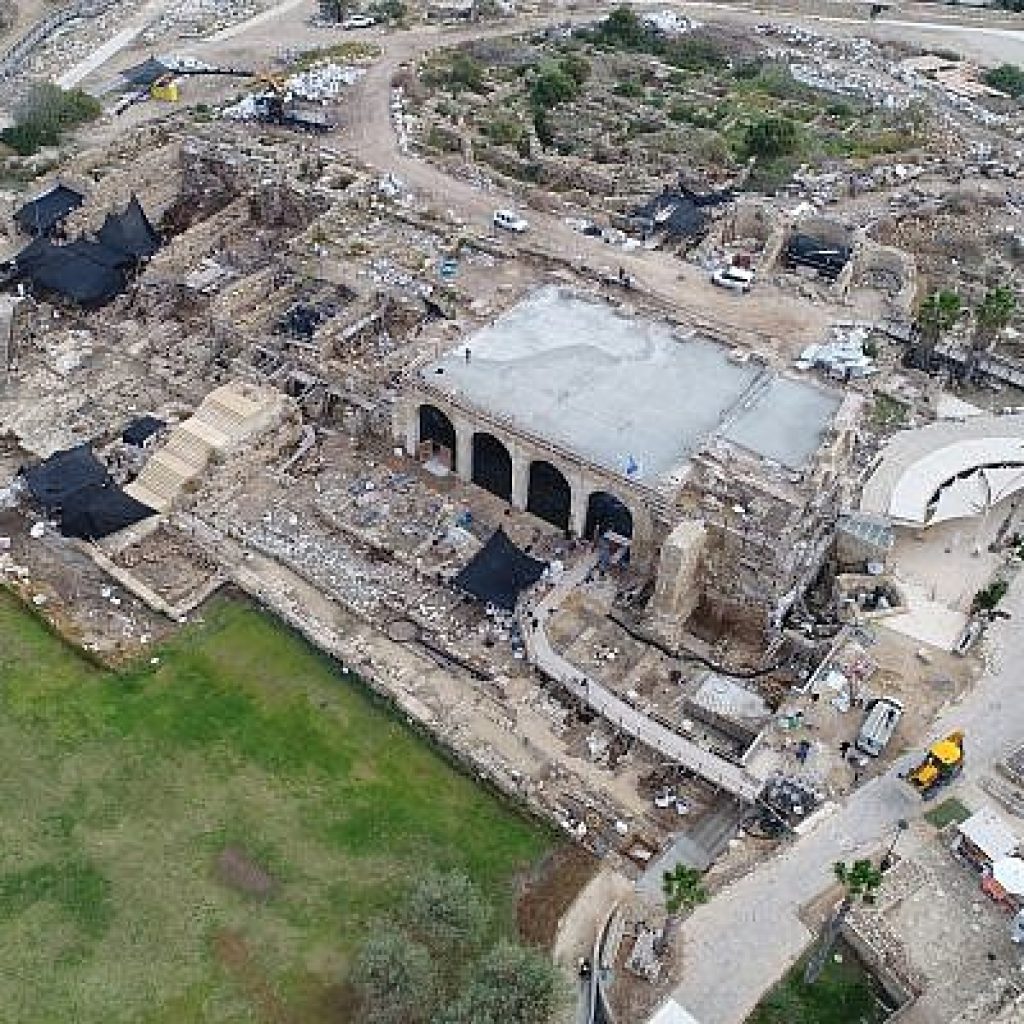
Brief History of Ancient Caesarea Maritima
Straton’s Tower
Caesarea Maritima was an ancient port city on the coast of the Mediterranean Sea, the ruins of which are now part of Israel’s Caesarea Harbor National Park, situated about one mile south of present day Caesarea. Ancient Caesarea was built on the site previously known as Straton’s Tower. Straton’s Tower was founded by Straton I, king of Sidon and established as a Phoenician trading colony. Later captured by the Hasmoneans Straton’s Tower remained a Jewish settlement until it became dominated by Romans in 63 BC.
In his first-century writings, historian Flavius Josephus states: “This city [Caesarea] was raised by Herod upon a certain place by the seaside, called Straton’s Tower, as being deemed a very commodious track of ground for that purpose. It was completed at an immense charge and was the paragon of elegance and magnificence. But the masterpiece was the port…”
Learn more from the writings of Flavius Josephus.
Caesar’s Gift to Herod
Around 30 BC Caesar Augustus gifted the site along with all of Judea to Herod the Great (the same Herod mentioned in Matthew 2:16-18) who renamed it Caesarea in honor of the Roman emperor. King Herod rebuilt and expanded the city between 22 – 10 or so BC. Among other construction projects, he built his palace, aqueducts to bring water from springs in the northeast, an amphitheater – the arena was larger than the Coliseum in Rome, a marketplace, hippodrome – for chariot races and other athletic competitions, bathhouses, and a temple dedicated to Caesar and Rome. The city was built to rival Alexandria in trade and the opulence of the city needed to reflect the eminence of Herod’s patron, Caesar Augustus. Caesarea was the base for Herod’s navy which provided aid to the Romans as far as the Black Sea. Under Herod’s reign the population of the city grew to around 100,000 people. After his death, Caesarea became the capitol of the Roman province of Judaea during his son’s, Herod Archelaus’ reign in 6 AD.

Herodian Harbor
The port itself was named Sebastos which is Greek for Augustus. Flavius Josephus compared it to Athen’s port at Piraeus. It was a monumental challenge with the lack of natural protection provided by natural bays or islands. There is a wonderful study online which details where much of Herod’s building materials originated. It’s a short article and interesting if you have time to delve further into. Materials studied included the timber believed to be from Cypress, volcanic ash used in making the hydraulic concrete from Italy, and foundation cobblestones whose provenance couldn’t be determined except that scholars noted they were dissimilar to the smooth round cobblestones found around Carmel. When Herod built the harbor in the first century BC, it was the largest artificial harbor in the world. Sebastos port was destroyed by an earthquake in 130 AD.

The Early Church at Caesarea
We can learn a lot about events in Caesarea from the New Testament. The Roman prefect of Judaea during Jesus’ time, Pontius Pilate, made his home in Caesarea. In 1961 a stone plaque was found with an inscription bearing Pontius Pilate’s name and designation, “prefect of Judaea”. It was also here that the apostle Peter converted the centurion Cornelius and his family, the first gentiles to be grafted in. Philip, the evangelist, lived in Caesarea with his four daughters and was visited by the apostle Paul. Paul was imprisoned at Caesarea for two years before sailing to Rome for trial. He also landed at Caesarea port upon returning from his 2nd and 3rd missionary journeys. Herod Agrippa was smitten by an angel here (Acts 12:20-23). Ancient Caesarea Maritima was part of exciting historical events in the early church during the first century.
Caesarea Maritima Today
Large scale archaeological excavations of Caesarea Maritima ruins began in the 1950s and 60s. The Jewish town of Caesarea was established nearby and the archaeological site was incorporated as the Caesarea National Park in 2011. Excavations have continued since then. In 2019, a large scale 5-year-long renovation project at the park was completed. Renovations included a visitor center built within four of the eight massive arched vaults which at one time stood beneath the temple King Herod built and dedicated to Caesar Augustus. Displays at the center include archaeological items found during the renovation, dating back over 2,000 years – gold coins and colorful mosaics. Also included in the renovation were the Roman-era aqueduct and amphitheater. Together with the new visitor center, a promenade was built along the Crusader-era walls. Preservation work began on an ancient synagogue at the site as well.

Israel21c article about the renovations completed in 2019 and opening of the new King Herod Visitor Center.
Caesarea National Park is one of the biggest and most beloved national parks in Israel. It attracts more than 900,000 visitors annually. The overall area of ancient Caesarea is 8,000 acres, of which only five have been explored. There’s no telling what hidden treasures are to be revealed from future area excavations. Whether you’re traveling to Israel with your church group or just visiting on your own Caesarea National Park is a must for your Israel itinerary! Caesarea Harbor National Park Map
I hope you enjoyed this brief history of Caesarea Maritima. Coral Travel & Tours is here to answer any questions you may have about Christian Heritage Tours to Israel. With over 20 years experience in bringing believers to the Holy Land, Coral has the expertise to provide top-notch tour and travel services! Take a look at some of our upcoming Christian Israel Tours.
Subscribe to our monthly e-Newsletter.
